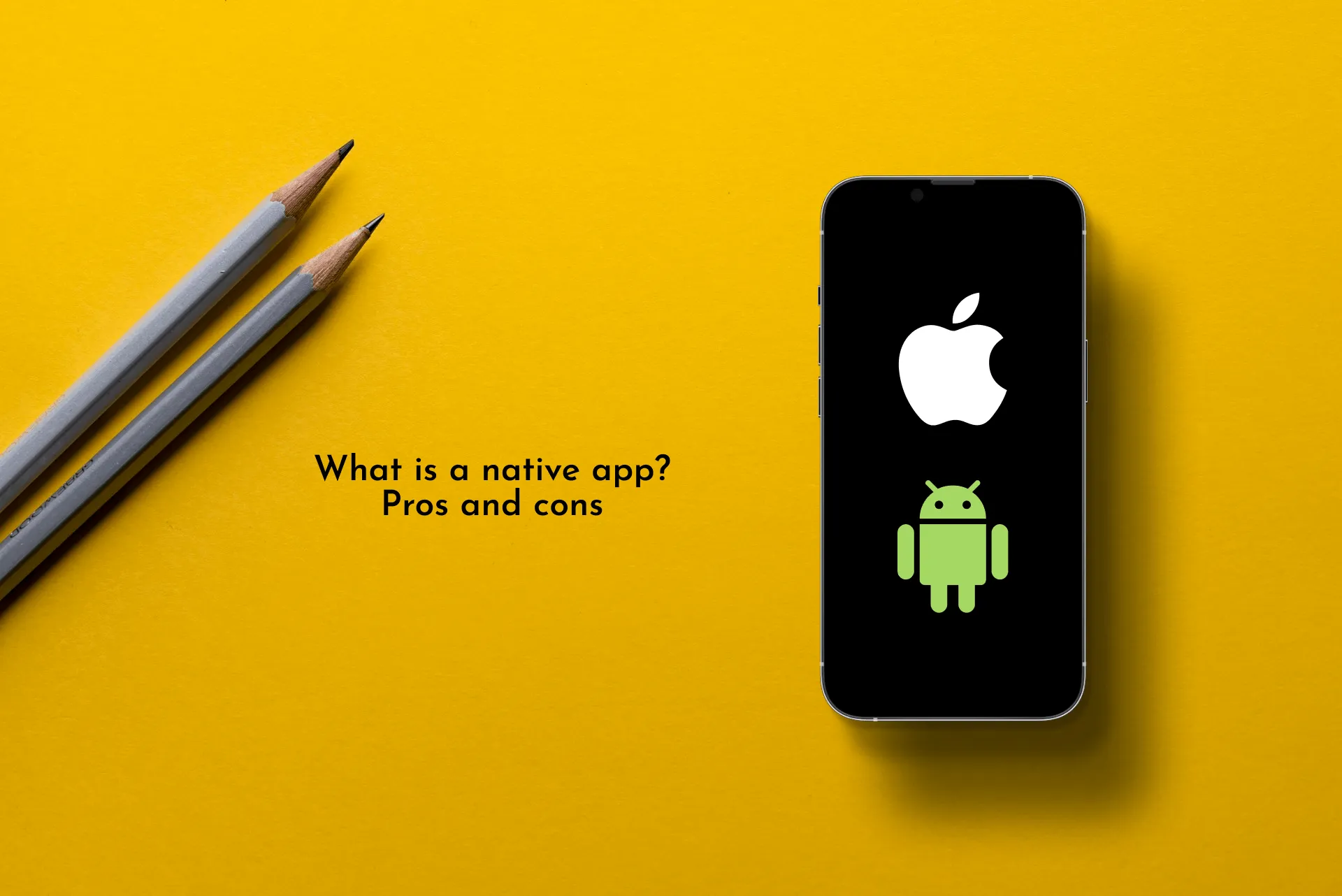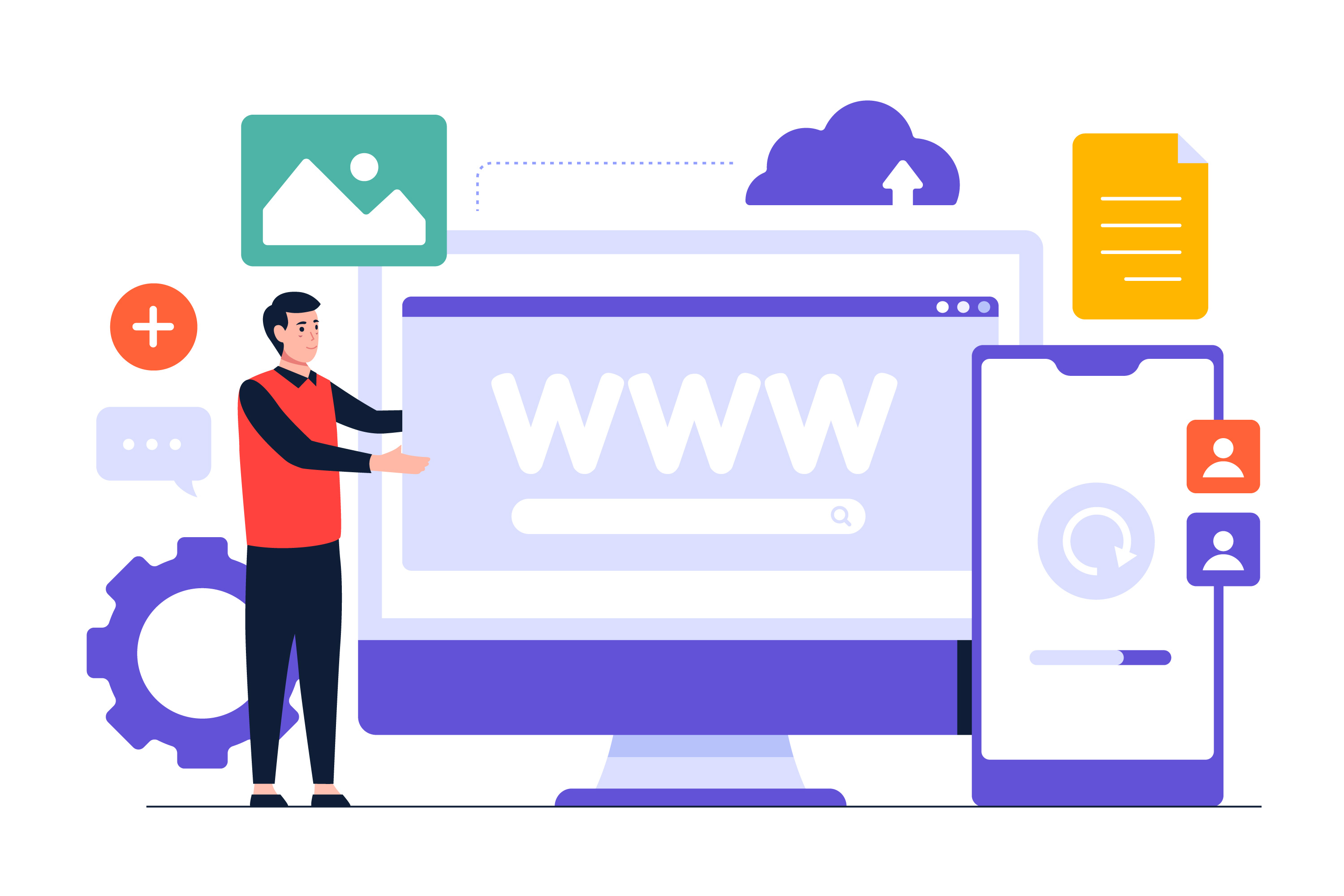

Updated:
June 16, 2025
Published:
January 24, 2024
Pros and Cons of Native App. When to Use Them
Imagine unlocking the true potential of your mobile device with apps designed to provide the smoothest, fastest, and most intuitive user experience possible. Welcome to the world of native applications, where apps are tailored specifically for the two leading operating systems, Android and iOS. These apps don't just run on your device; they seamlessly integrate with the hardware and software, offering unparalleled performance and functionality. Dive into this post to discover how native app development leverages the full capabilities of your smartphone or tablet, providing an optimized experience that keeps you coming back for more.
What is a native app?
A native app is developed for a specific platform using native programming. By using languages and frameworks that are supported by the operating system (for example, Java or Kotlin for Android and Swift for iOS), the application integrates seamlessly with the respective platform.
How do native apps work?
Native means that the mobile app is specifically designed to provide optimal performance and user experience on target devices.
Typical examples of native apps:
- Google Maps (iOS and Android): The native version of Google Maps uses the functions of the respective platforms to offer precise navigation and location services.
- Spotify (iOS and Android): This music streaming app is available natively for iOS and Android and offers really good audio quality.
- WhatsApp (iOS and Android): WhatsApp is a platform-dependent messaging app that is available as a native app for both iOS and Android devices. It allows text messages, calls, and media sharing.
These native application examples show how native app development is used on both major platforms (iOS and Android) to provide optimal performance and a consistent user experience.
Advantages of native apps:
1. Optimum performance:
Natively programmed apps offer outstanding performance as they can directly access the device's resources. These results in faster load times and smoother interaction. Because of their close integration with the device's operating system and hardware, native applications are certainly faster and more responsive. This is particularly important for applications that require real-time interactions, such as games or messaging apps.
2. Comprehensive access options:
Native apps offer app developers maximum access to the hardware and features of a mobile device. This allows functions such as GPS, camera, microphone, Bluetooth, and so on to be used with maximum efficiency. This allows advanced features that are specifically tailored to the hardware and software.
3. Better user experience:
Adapting to the design guidelines of the respective operating system ensures seamless integration into the user interface. As a result, users experience consistent and intuitive operation. Native apps are able to precisely follow the design guidelines and interaction patterns of the respective operating system. These results in a “familiar” and therefore positive and user-friendly experience.
4. Access to app stores:
Native apps can be published directly in official app stores, such as the Google Play Store or the Apple App Store. This makes distribution and retrievability easier for users.
5. Efficient use of hardware:
With direct access to hardware features such as camera, GPS, and sensors, natively developed apps can deliver more efficient and accurate results.
6. Very high safety:
Native app development provides excellent control over the security of the application. This is particularly important for apps in safety-critical industries such as financial services or healthcare.
7. Scalability and long-term maintenance:
Native apps are highly scalable and offer flexibility for long-term maintenance and updates. The separate development for different platforms makes it possible to individually adapt and expand each version.
Overall, a mobile native app therefore offers advantages such as high performance, optimized user experience, and comprehensive access to device functions. These advantages of native apps make them a compelling choice for many developers.
Disadvantages of native apps:
1. Development time and costs:
Developing native apps requires specific know-how for each operating system. These results in longer development times and higher costs compared to cross-platform mobile applications. Native app development certainly requires more time and effort than other approaches when you need to build two separate apps to serve your target audience. This can make market launch difficult. Because of the need to develop and maintain two different code bases, native apps are usually more expensive than cross-platform mobile apps.
2. More complex maintenance:
Maintaining native apps requires updating and maintaining two separate applications. These results in higher costs. Each platform can also present its own challenges and unpleasant surprises when it comes to updating and troubleshooting. Changes or updates must be carried out separately for each platform, which means additional effort.
3. Restricted range:
Because native apps are tailored to a specific operating system, they don't automatically reach all mobile users. This can result in limited reach, particularly when the target audience is spread across different platforms.
4. Platform dependency:
A native app cannot run on multiple operating systems at the same time. This requires separate development steps for Android and iOS.
Although native app development has these drawbacks, they are often justified when specific performance, user experience, and platform-specific features requirements must be met. Understanding native app advantages and disadvantages helps in making an informed decision.
What should be considered when designing native apps?
When designing a native app, the following aspects should be considered to ensure that the app works efficiently and provides an appealing user experience:
- Platform-specific design: Each platform (iOS and Android) has its own design guidelines and user interface conventions. With a native Android app, it is therefore important to consider and ensure that the design of the app meets the operating system standards.
- Performance optimization: Native apps offer high performance, and the design should be geared to harnessing that strength.
- Design for offline use: If your native app offers offline functionality, the design should take that into account.
- Tests and user feedback: Before publishing the app, do extensive testing to ensure that the design works well on both platforms and different devices.
- Consistent Branding: Maintain consistent branding and design across your app. This should be as similar as possible in both versions of the native app and create recognition and trust among users.
Like any app, designing a native app requires careful planning to ensure an efficient and appealing user experience.
What costs can you expect with a native app?
The costs of developing a native app can vary significantly, as they depend on various factors:
- Complexity of the app: The complexity of the app is a decisive factor for costs. Simple apps with basic features will generally cost less than extensive apps with complex features and interactions.
- Platforms: Development for various platforms (iOS and Android) increases costs because 2 separate code bases must be created. This means that the development and maintenance of two versions of the app are required.
- Testing: A comprehensive trial period is important to ensure that your app works well on both platforms. This may result in additional costs.
Keep in mind: Calculating the costs of your app project requires a thorough analysis and planning of your MVPs. With strategic considerations and good preparations, you will definitely avoid unpleasant financial surprises. We can provide you with transparent advice on all possible native app costs.
Alternatives to Native App Development
While native app development offers many advantages, it's not the only path to creating a mobile application. Several alternative development methods can suit different needs and resources. These alternatives include hybrid app development and web app development. Each option has its unique characteristics and benefits, making them viable choices depending on the specific requirements of your project.
Hybrid app development
Hybrid app development combines elements of both native and web applications. These apps are built using web technologies like HTML, CSS, and JavaScript, and then wrapped in a native container that allows them to run on various platforms.
- Cross-platform compatibility: Hybrid apps can run on multiple operating systems with a single code base.
- Cost-effective: Development and maintenance are generally less expensive than native apps since there's no need for separate versions.
- Moderate performance: While not as fast as native apps, hybrid apps offer better performance than pure web apps.
Web app development
Web app development focuses on creating applications that run within a web browser, offering a more straightforward development process and broad accessibility.
- Platform Independence: Web apps can be accessed from any device with a browser, making them highly versatile.
- Lower Development Costs: Building and maintaining web apps is often cheaper than native and hybrid apps.
- Limited Offline Functionality: Web apps typically require an Internet connection to function fully, which can be a drawback in areas with poor connectivity.
By understanding these alternatives and their characteristics, you can choose the most suitable app development approach for your project, balancing performance, cost, and user experience to meet your specific needs.
Conclusion
Native app development stands out for its high performance, superior user experience, and comprehensive access to device features, making it a preferred choice for many developers. However, it's important to consider the associated costs, development time, and maintenance complexity. Exploring alternatives like hybrid and web app development can provide more cost-effective and versatile solutions, especially for projects with budget constraints or broader platform reach requirements. By weighing the advantages and disadvantages of each approach, you can make an informed decision that best aligns with your project goals and user needs.


Zwischen Agenturalltag und Startup - unser Blog
In unserem Blog teilen wir Tipps rund um das Thema Appentwicklung, Startups und einige verrückte Geschichten aus unserem Agenturalltag mit euch.
Book yours free Video call
Do you want to talk to our team about your project and just hear what we could do for you? Then simply book a free video call with us now!







.gif)